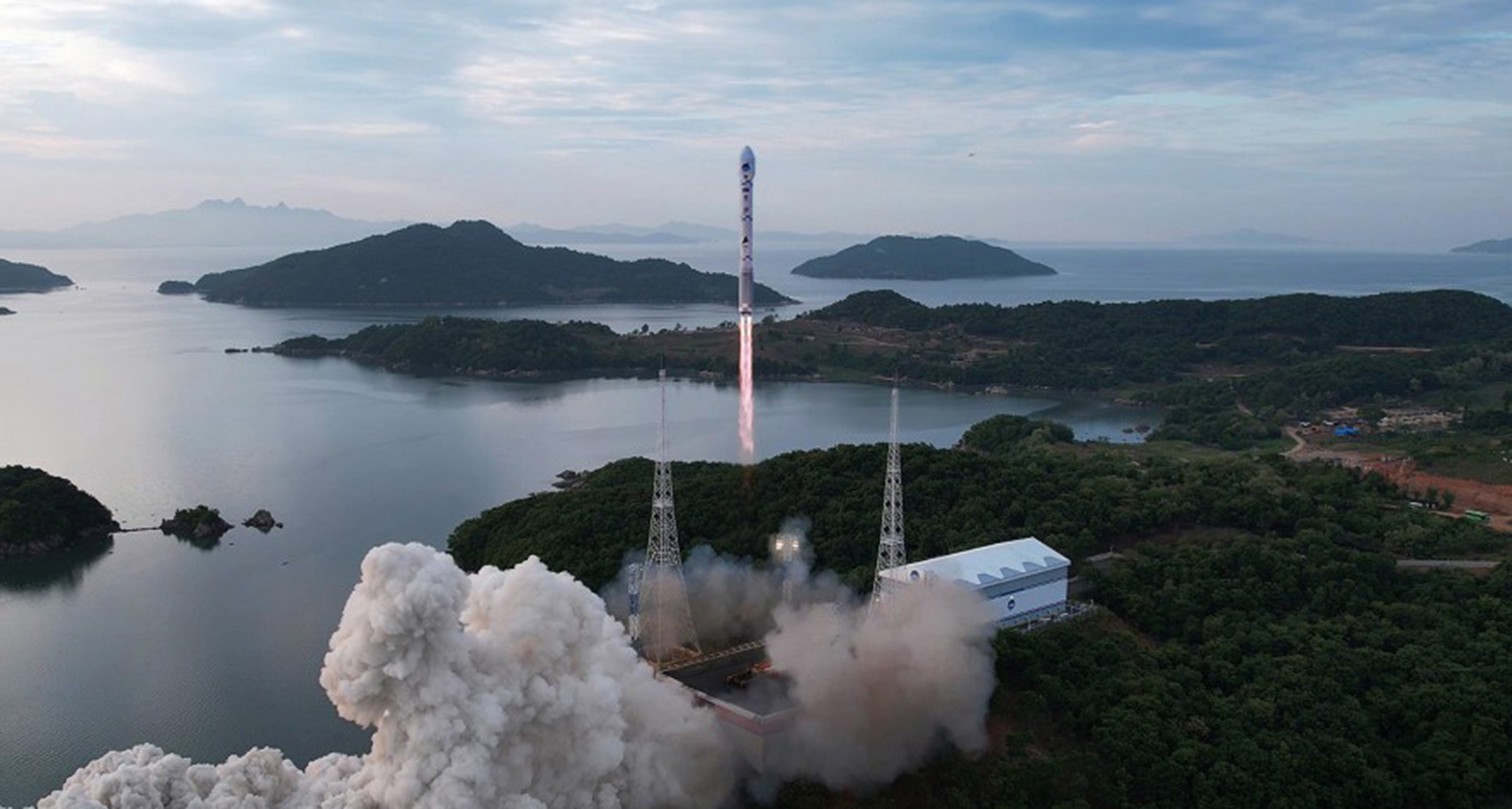21.11.2023

North Korea appears set to make a third attempt to launch a military spy satellite between Nov. 22 and Dec. 1, according to a notice released by the Japan Coast Guard on Tuesday.
The maritime navigational warning includes a set of coordinates provided by North Korea for expected rocket stage drop zones in the Yellow Sea and Pacific Ocean exactly matching the zones of the first two attempts in May and August.
Both of those took place in the morning on the first day of each of their announced launch windows at the Sohae Satellite Launching Ground in the northwest of the country, suggesting the third attempt is likely to occur on Wednesday morning if weather permits.
The Japanese Prime Minister’s Office on Tuesday issued a “strong demand to halt the launch” and said it would coordinate with the U.S. and South Korea over the matter.
South Korea’s Joint Chiefs of Staff (JCS) also warned North Korea on Monday not to go through with another attempt, calling it a “major threat to our [country’s] security.”
North Korea said hours after the first failure of the Chollima-1 (a.k.a. Chonma-1) rocket on May 31that the second-stage rocket engine failed to ignite. The South Korean military later recoveredrocket sections from the Yellow Sea and claimed it salvaged the Malligyong-1 satellite but did not release images of the latter.
DPRK state media also quickly acknowledged the second failure on Aug. 24, that time saying the rocket succeeded until a minor error with the third stage and that a third attempt would take place soon after in October.
But October came and went without a launch. In the meantime, North Korean leader Kim Jong Un met his Russian counterpart Vladimir Putin in September at a Russian space launch facility, where Putin said he would help Kim develop satellite technology.
Ankit Panda, Stanton Senior Fellow in the Nuclear Policy Program at the Carnegie Endowment on International Peace, told NK News that the matching drop zones for the third attempt means there are no “obvious” signs of Russian assistance but that the delay from October could mean there was coordination.
Martyn Williams, a senior fellow at the Stimson Center, said that announcing the same drop zones means North Korea appears to be “going for the same orbit” as planned for the first two launch attempts.
Kim announced his plans to put the country’s first military reconnaissance satellite in orbit at a party congress in Jan. 2021. He made a series of public visits to launch and control facilities in 2022 and this year, and a new launchpad was built rapidly at Sohae just before the May launch.
The name of the country’s space agency was also changed at a parliamentary session in September from the National Aerospace Development Administration (NADA) to the National Aerospace Technology Administration (NATA).
Chad O’Carroll contributed reporting to this article. Edited by Arius Derr
Last updated on Nov. 21 at 07:52 a.m. KST with Japanese and South Korean government statements and at 7:15 p.m. with new headline.
Quelle: NK News

